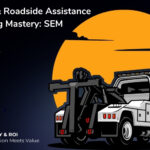In the ever-evolving realm of marketing, a growing number of businesses are finding themselves in a quandary. The question they grapple with is this: how do we successfully integrate traditional marketing strategies with the fast-paced, high-octane world of digital marketing? This blog aims to guide you through bridging this gap and achieving a well-rounded, effective marketing approach.
Traditional marketing, with its tried and true methods, has an intrinsic value that cannot be dismissed. Think about billboards, TV commercials, radio ads, direct mail – they have the power to reach a broad audience, building brand recognition and trust over time. However, as the digital landscape has expanded, so too have the opportunities to connect with customers in a more personalized, interactive, and data-driven way. Hence, the key lies in the integration of these two worlds – creating a seamless, synergistic marketing strategy.
Before we delve into how to accomplish this integration, it’s important to understand that digital and traditional marketing aren’t mutually exclusive. They should be regarded as opposing sides of the same coin. While digital marketing allows businesses to reach a global audience, engage with customers directly, and gather invaluable insights through data analytics, traditional marketing excels at fostering a local presence and creating tangible, enduring connections with the audience.
Bridging the gap begins with understanding your target audience’s needs, preferences, and behaviors. Are they tech-savvy millennials who spend hours on social media, or are they baby boomers who prefer reading newspapers and watching TV? A nuanced understanding of your audience will help you design a marketing strategy that encompasses both traditional and digital methods, tailored to reach your audience effectively.
Next, consider how your marketing messages can traverse different platforms. For example, you might run a TV ad campaign that encourages viewers to visit your website or engage with your brand on social media. QR codes in print ads can lead customers to landing pages with more information or special offers. This cross-channel promotion not only maximizes exposure but also bridges the gap between traditional and digital marketing.
Social media platforms can be used to breathe new life into traditional marketing materials too. For example, you could share your TV commercials or print ads on your social media channels, offering your online audience a glimpse into your brand’s broader advertising efforts. This can help foster a stronger connection between your digital and traditional marketing efforts in the minds of your consumers.
Measurement is another critical aspect of integrating traditional and digital marketing. While digital marketing provides more straightforward metrics such as click-through rates and conversion rates, traditional marketing’s impact can be more challenging to quantify. However, by using unique phone numbers or web addresses in your traditional ads, or by surveying customers about how they heard of you, you can gather valuable data about your traditional marketing efforts.
Bridging the gap between traditional and digital marketing is more than just a tactical shift; it’s a paradigm shift. It requires viewing marketing not as a series of disparate efforts but as an interconnected web of strategies, each supporting and enhancing the others. By finding innovative ways to integrate these two worlds, businesses can not only reach more people but also create more meaningful and effective engagements with their audience.





